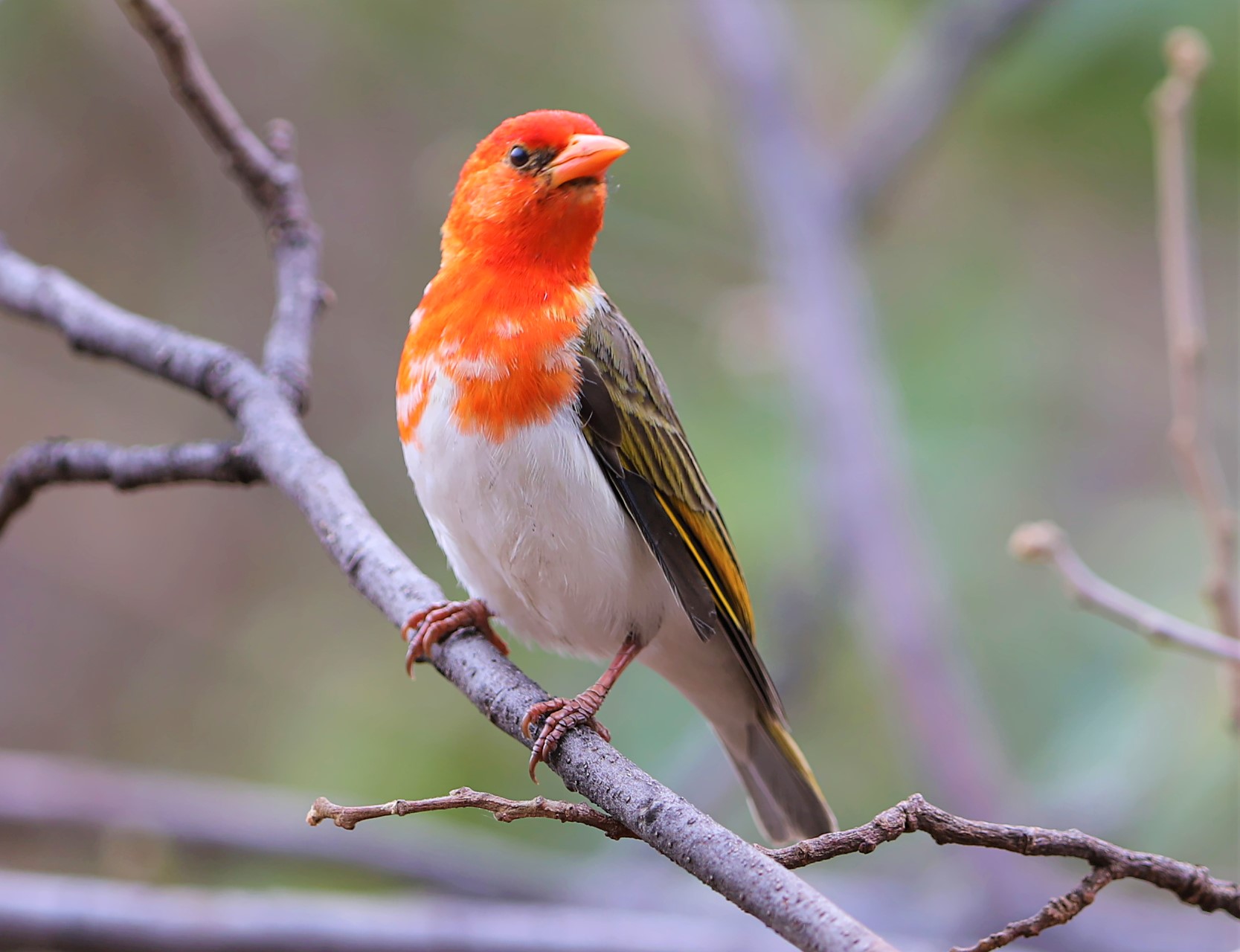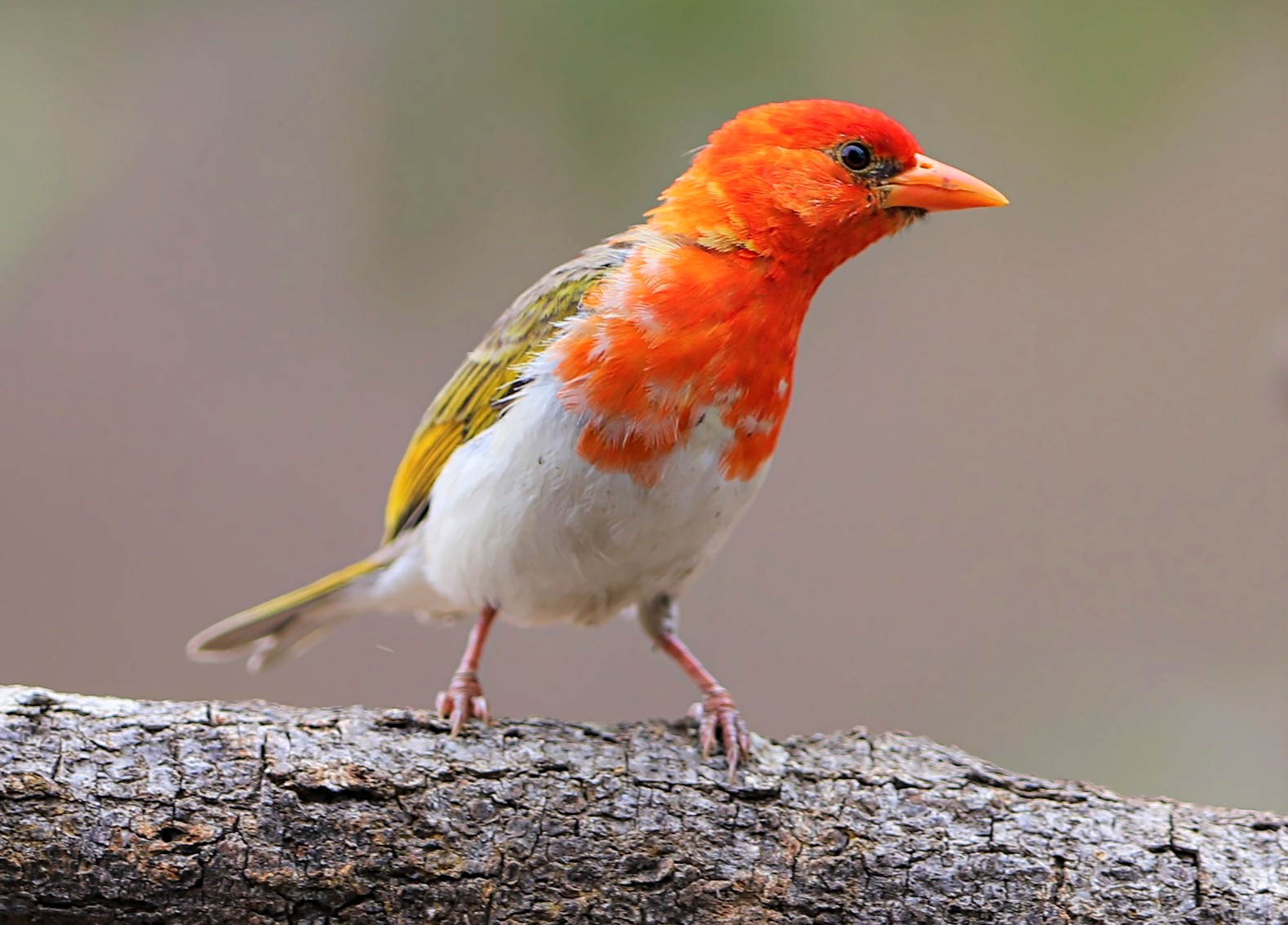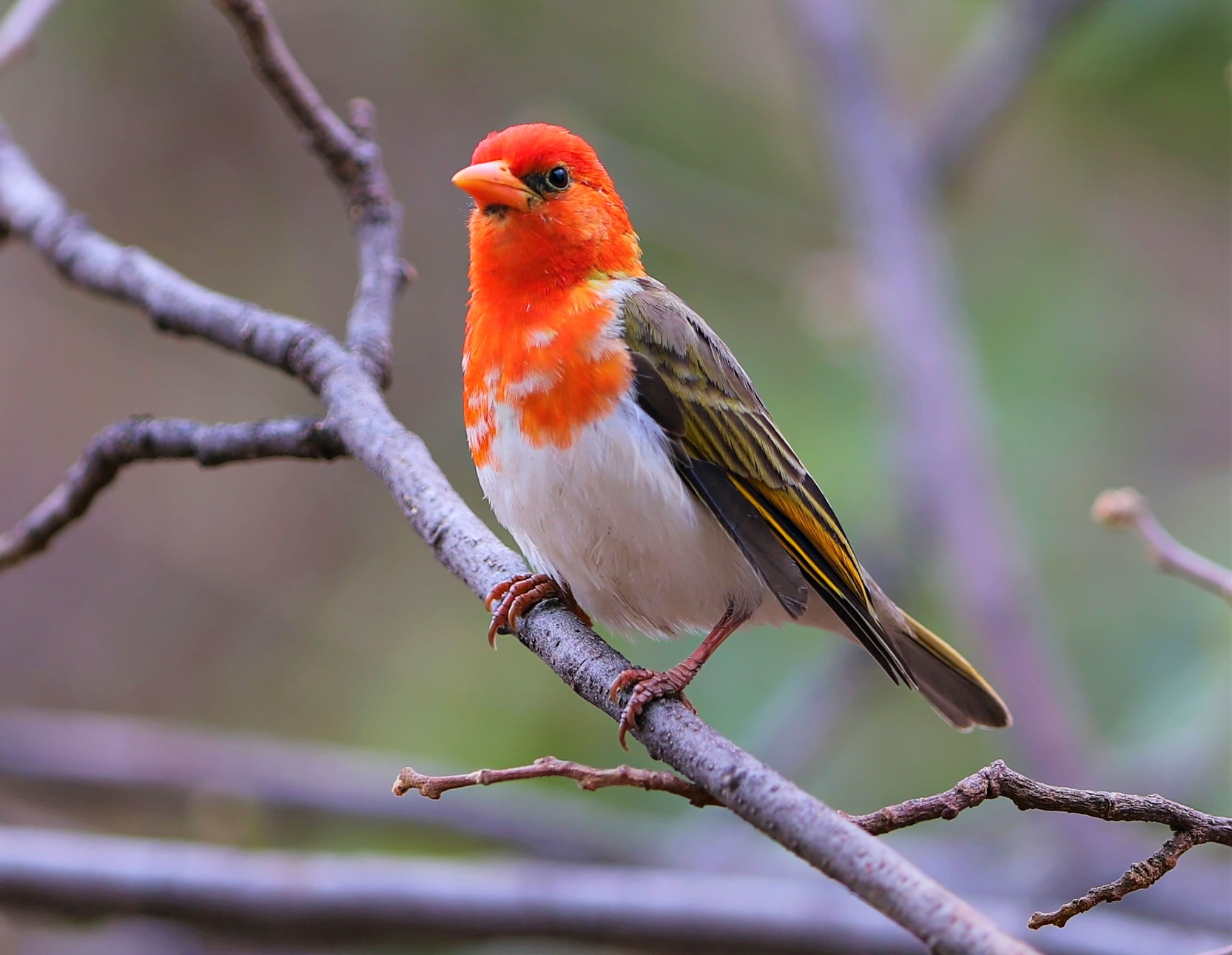The Southern Red-headed Weaver: A Master Weaver of the African Savannah
In the vast grasslands and woodlands of sub-Saharan Africa, a small bird with a vibrant red head and intricate weaving skills catches the eye of wildlife enthusiasts and birdwatchers. Meet the Southern Red-headed Weaver (Anaplectes rubriceps), a remarkable avian species renowned for its stunning plumage and exceptional nest-building abilities.
The Southern Red-headed Weaver is a member of the weaver family, known for their intricate nest constructions. Among the weaver species, this particular bird stands out due to its vibrant red head, contrasting beautifully with its otherwise black plumage. The males sport this striking red crown, while females exhibit a more subdued plumage with shades of brown and black.
Endemic to southern and eastern Africa, the Southern Red-headed Weaver inhabits a range of habitats, including open grasslands, savannahs, and woodland areas. It is commonly found in countries such as South Africa, Zimbabwe, Mozambique, and Kenya. Within its chosen habitat, this skilled avian weaver thrives in colonies and constructs intricate, woven nests suspended from the branches of trees.
During the breeding season, male Southern Red-headed Weavers showcase their weaving prowess as part of their courtship display. These impressive displays involve intricate and elaborate nest constructions that serve to attract potential mates. Using long grasses, palm fibers, and other plant materials, the males weave a tightly-knit, flask-shaped nest with a small entrance tunnel. The nests are designed to protect the eggs and young from predators and adverse weather conditions.
The weaving process is a meticulous endeavor that requires both skill and patience. Male weavers meticulously select suitable nesting sites and meticulously weave strands of grass to create a secure structure. They utilize their beaks and feet to manipulate the materials, adding layers and reinforcing the nest’s walls. The completed nests can often be found hanging in clusters, resembling a collection of suspended woven orbs.
Once a pair is formed, the female inspects the male’s nest-building skills before choosing a mate. If satisfied with the male’s construction, she will lay her eggs inside the nest, and both parents take on the responsibility of incubating the eggs and raising the chicks. This cooperative effort ensures the survival of the offspring and allows the female to initiate subsequent broods.
In addition to their remarkable weaving abilities, Southern Red-headed Weavers are also known for their melodious calls. Males sing complex songs to establish their territories and attract females. Their songs consist of a series of whistles, trills, and chattering notes, adding a musical element to the African savannah.
While the Southern Red-headed Weaver’s population is considered stable, like many other bird species, it faces threats such as habitat loss and fragmentation due to human activities. The conversion of grasslands to agricultural land and the removal of trees for timber or charcoal production pose risks to their nesting sites. Conservation efforts, including the protection of suitable habitats and raising awareness about the importance of preserving these avian wonders, are crucial for their long-term survival.
For bird enthusiasts and nature lovers, observing the Southern Red-headed Weaver in its natural habitat is a privilege. Witnessing the males’ intricate weaving displays and hearing their melodious calls is a testament to the marvels of the avian world. As we admire the beauty and ingenuity of these remarkable birds, let us also work towards conserving their habitats and ensuring their continued presence in the African savannahs for generations to come.
Hits: 0








